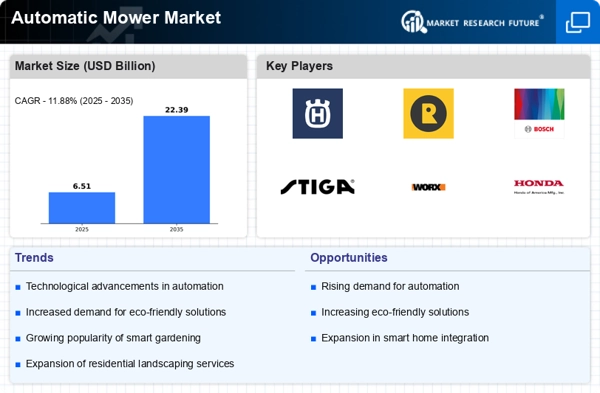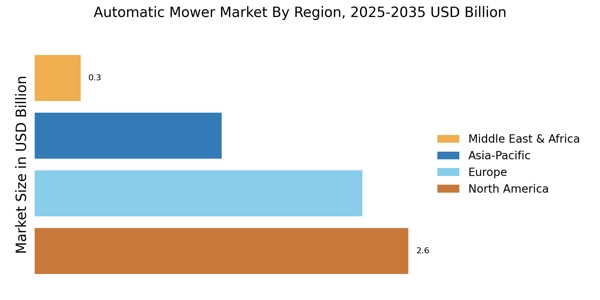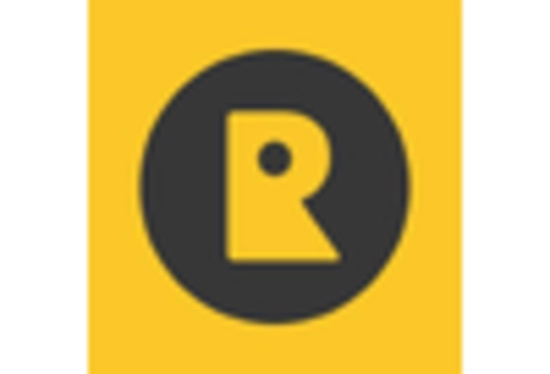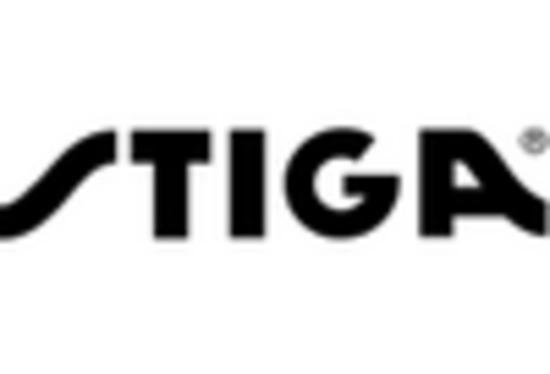The Automatic Mower Market is currently characterized by a dynamic competitive landscape, driven by technological advancements and increasing consumer demand for efficient lawn care solutions. Key players such as Husqvarna (Sweden), Bosch (Germany), and John Deere (United States) are at the forefront, each adopting distinct strategies to enhance their market presence. Husqvarna (Sweden) focuses on innovation, particularly in developing AI-driven mowers that optimize cutting patterns and energy consumption. Bosch (Germany) emphasizes partnerships with tech firms to integrate smart home capabilities into their products, while John Deere (United States) leverages its extensive distribution network to penetrate new markets, particularly in North America and Europe. Collectively, these strategies contribute to a competitive environment that is increasingly centered around technological differentiation and customer-centric solutions.
In terms of business tactics, companies are localizing manufacturing to reduce costs and enhance supply chain efficiency. This approach is particularly evident in the Automatic Mower Market, which appears moderately fragmented, with several players vying for market share. The collective influence of these key players shapes a landscape where innovation and operational efficiency are paramount, allowing them to respond swiftly to changing consumer preferences and market demands.
In August 2025, Husqvarna (Sweden) announced the launch of its latest line of robotic mowers equipped with advanced AI technology, which allows for real-time adjustments based on weather conditions and lawn growth patterns. This strategic move not only reinforces Husqvarna's commitment to innovation but also positions the company as a leader in the smart gardening segment, potentially attracting tech-savvy consumers looking for high-performance solutions.
In September 2025, Bosch (Germany) unveiled a new partnership with a leading smart home technology provider, aiming to integrate their robotic mowers with home automation systems. This collaboration is significant as it enhances the user experience by allowing consumers to control their mowers through smart devices, thereby tapping into the growing trend of connected home ecosystems. Such strategic alliances may provide Bosch with a competitive edge in a market increasingly driven by digital integration.
In October 2025, John Deere (United States) expanded its product line by introducing a new series of electric mowers designed for commercial use, targeting landscaping companies and municipalities. This move reflects a growing trend towards sustainability and eco-friendly solutions in the lawn care industry. By diversifying its offerings, John Deere not only addresses environmental concerns but also positions itself to capture a larger share of the commercial market, which is expected to grow in the coming years.
As of October 2025, the Automatic Mower Market is witnessing trends that emphasize digitalization, sustainability, and the integration of artificial intelligence. Strategic alliances among key players are increasingly shaping the competitive landscape, fostering innovation and enhancing product offerings. Looking ahead, it is likely that competitive differentiation will evolve, shifting from traditional price-based competition to a focus on technological advancements, reliability in supply chains, and sustainable practices. This transition may redefine how companies position themselves in the market, ultimately benefiting consumers through enhanced product capabilities and service offerings.


















Leave a Comment